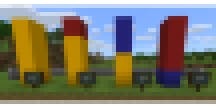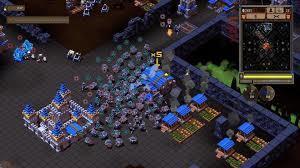Stone Marshall's Blog, page 47
February 10, 2019
Change the Game: Using Minecraft to Teach Students with Autism
This article is part of the upcoming guide Game-Based Learning: Preparing Students for Their Future.
I find it baffling that in 2019 I still have to explain why it’s important to play with students, especially when Fortune 500 companies are gamifying their workplace and their customer outreach, profitable gamer-culture on YouTube is on the rise and colleges have eSports teams.
It’s even more baffling when you acknowledge that throughout history, renowned philosophers and educators—including Plato, Comenius, Locke, Rousseau, Froebel, Piaget, and Papert—have lauded the power of play in teaching, especially for young learners. Modern research has continued to demonstrate that playful learning improves educational outcomes, even more so when it’s digital and multi-modal. I’ve certainly found that to be true in my years teaching non-traditional learners.
Modern research has continued to demonstrate that playful learning improves educational outcomes.
Despite popular myth, games actually discourage negative behaviors, benefit mental health and improve social skills. Of course, not all games are created equal. Certain elements are consistently present in quality gamesand quality learning tools. The best games are just fun, and the learning is almost invisible. I’ve always felt that the most powerful justification of learning through play is intrinsic motivation.
This is important because school tends to focus on extrinsic rewards like grades, stickers or candy, which are ineffective and possibly harmful to a student’s long-term educational needs. Games can help internalize motivation, building student perseverance and grit. Think about a child still trying to get Mario to make that jump after falling fifteen times. That same student may give up in class after one half-hearted try.
 Games provide challenges and intrinsic motivation. All embedded image credits: Sean Arnold.
Games provide challenges and intrinsic motivation. All embedded image credits: Sean Arnold.For these reasons and others, I have long sought to use games, both analog and digital, to instruct my classes filled with students who are non-traditional learners, many of them with autism. Not only do games bring learning to my students in ways that are unobtainable in direct instruction, but they also promote social connections through play and reinforce the development of 21st century skills. Perhaps better called essential modern skills at this point, these are particularly embedded in digital games. Since my early teaching days, I have sought to instruct in an open environment, allowing choice and personalization for hands-on and playful learning. With this same intention, I introduced Minecraft into my classroom.
Not only do games bring learning to my students in ways that are unobtainable in direct instruction, but they also promote social connections through play and reinforce the development of 21st century skills.
Minecraft Education
I learned about Minecraft when I overheard students expressing excitement about playing it outside of school. I decided to check it out for myself. I didn’t really understand it at first, but it seemed like a good way to begin teaching some of the design principles I modeled in my classes. So it began as STEM design challenges for my older, more adept students. Soon though, I realized it could be used for much more. I had skilled students recreate historic moments and allowed other students to explore and learn from those creations.
It’s important to recognize that, even as the gaming universe continues to expand, Minecraft stands as a unique experience in digital games. I can think of no other game that exemplifies creativity and autonomy in play in quite the same way. I have heard it compared to digital LEGOs (another worthwhile classroom tool) which is apt, as they both provide an open space for students to easily create directly from their imagination the world as they envision it. And while I love LEGOs, Minecraft is definitely easier to build in scale and clean up, not to mention less likely to hurt your foot in a misstep. Minecraft gives children a way to use their creative faculties in an environment unbound by rules.
I hit upon real success when I began to apply it to social-emotional learning. I would come to realize that the community is one of the most powerful, as well as one of the most precarious, parts of the game. The collaborative environment that could be so beneficial for learning could also be littered with many of the other negative issues we find elsewhere online. So, I paid for a small private server for my students to explore and work together safely.
Minecraft, Autism and 21st Century Learning
I was unaware of this early on, but eventually discovered that I wasn’t the only one who found Minecraft useful as an assistive technology for people with autism. Research shows how players “modded” their environment to “support self-regulation and community engagement.” And problems inherent in an open online setting, like bullying, oversharing and miscommunication, were resolved when I learned that an education editionhad been developed for Minecraft and that, even within the consumer version, a private community had been created specifically for people with autism called Autcraft.
I’ve found Minecraft to be an exemplar of those 21st century learning traits mentioned previously. The game personifies creativity and collaboration. If designs are complex, they require planning and critical thinking to solve such challenges as determining what material will meet our aesthetic or how we can adapt to the natural environment around us. When the teacher requires other design challenges—accounting for material cost or using sustainable materials—students must access higher order thinking skills.
 Minecraft Item Labels
Minecraft Item LabelsOne of the major benefits of the game, specifically for children with autism, comes with communication. Chat features are enabled with speech-to-text functionality, which lets struggling readers and writers plan and participate with the community at their own pace without the pressure of a face-to-face conversation. In fact, the game dynamic of signs that relay information is similar to the way we use vocabulary on real-world objects to teach language in early-childhood and language-challenged classrooms. This encourages social interaction in a comfortable manner within the game’s well-defined rules. Players are not just conversing for the sake of it but in an effort to successfully complete their in-game projects. That is huge for these students. And I have personally seen improvement in written language and increased verbalization in students with limited verbal skills through Minecraft game-play.
Practical Advice
One of the major benefits of the game, specifically for children with autism, comes with communication. Chat features are enabled with speech-to-text functionality, which lets struggling readers and writers plan and participate with the community at their own pace without the pressure of a face-to-face conversation.
I have now become skilled enough to create Minecraft worlds that engage my students in the type of learning I want to see, but I still make sure to allow enough freedom for them to have a choice in their learning. One of my projects has students with autism, who struggle with personal identity, creating a Minecraft journey that begins with self-portraits and personal narratives of their lives and families. Originally I had students do video walkthroughs to document and explain their work, but now I use speech-to-text apps to copy their ideas into writing for the built-in portfolio. There are several other game adaptations I have used from simple color-coding to using adaptive switches that have improved the game’s accessibility.
 Minecraft provides a variety of opportunities and environments for learning life skills.
Minecraft provides a variety of opportunities and environments for learning life skills.One of the most useful ways I’ve incorporated Minecraft is in recreating local environments like the school, home or a grocery store. Students with mobility or behavioral issues can now traverse those environments safely in the virtual world before attempting it in the physical world. It has really helped students feel connected to the world in ways that weren’t always possible. I loved the fact that my students were no longer confined to wheelchairs or leg braces; they could walk, create and even fly. It’s a world where they are free from ridicule, free from their real-world struggles and free to create a world that they desire. That freedom is why Minecraft continues to be a crucial tool for me and my students.

February 9, 2019
“Minecraft has opened up Java to a range of people who probably don’t even realise the skills they have acquired through it”
Microsoft, which owns Mojang, the company that makes Minecraft, recently released two parts of Minecraft’s code in library form. So what does Minecraft have to do with the Java community? For starters, Java-based Minecraft has spawned a new generation of Java developers. We talked to Mark Little, VP of Engineering and JBoss Middleware CTO at Red Hat about how this helps to shine a positive light on the Java language.
JAXenter: Minecraft is not necessarily the first thing one would think of when talking about Java but, as it turns out, this popular game has what it takes to breathe new life into Java. Can Java-based Minecraft spawn a new generation of Java developers?
Mark Little: Yes, absolutely. In fact, if you look at some of the articles that came out in 2014 when Microsoft announced they were acquiring Minecraft for $2.5 billion, you’ll find several which mention the developer community as one of the key reasons behind it. I’m not sure about the demographics of the Minecraft community but certainly back in 2015 when Arun Gupta, his son, myself and my son attended Minecon and gave classes throughout the day on how to mod Minecraft many of the attendees were towards the younger end of the age spectrum.

8-Bit Hordes Review – Medieval and Middling (PS4)
With its colorful and boxy voxel-based aesthetic, 8-Bit Hordes could be the introduction to the real-time strategy (RTS) genre that hooks otherwise uninterested Minecraft fans. It also made the jump to console, so for those among us who game exclusively on PS4, this could likely be an introduction to the RTS genre, one typically seen more in the PC environment.
As I jumped into one of two campaigns, I quickly realized that this was my introduction to the RTS as a genre. I’ve had consoles for my entire life, but never owned a PC powerful enough to run new AAA games. I’m a big turn-based tactics fan, so the act of devising a plan of attack and moving troops into position is familiar for me. But, learning to juggle mining and building and attacking was new.
It isn’t the series’ introduction to console, though. Developer Petroglyph previously released the first 8-Bit game, 8-Bit Armies, and has the series’ third entry, 8-Bit Invaders, coming to PS4 at the end of the month. So, for those who are just getting acquainted, there’s plenty more where this one came from.
Meet 8-Bit Hordes
But, does 8-Bit Hordes work as an introduction? For Minecraft fans, maybe? There are minecarts, which you, as the God-like commander of either the Lightbringers or the Deathsworn, will send to gather resources from all over the war torn maps. Once the materials have returned to your fortress, you’ll use them to create new units and new structures.
If you’ve learned resource management from Mojang, this simplified take may not do much for you. The mysterious material you extract from the ground can be used to build farms, barracks, dwarves, and dragons. This is a departure from Minecraft and, as I understand it, most real-time strategy games: you won’t need different materials to build different things and you won’t be combining distinct compounds to craft something new; like some kind of minable atom, the easilyobtainium that runs in crisscrossing veins beneath the 8-bit earth is the building block comprising everything.
That’s not really a negative. As 8-Bit Hordes may be the first RTS that console-only players get their hands on, the simplified approach works. And, laudably, Petroglyph pretty successfully mapped RTS controls to the Dualshock 4. Pressing R3 brings up a map with six sections you can transport among, making it easy to switch between troops on opposite sides of the map. L1 and R1 bring up structure and unit wheels respectively, and the triggers allow you to fix or scrap your buildings. It all maps pretty neatly and I never felt hamstrung by my lack of a mouse and keyboard.

On Your Own
I did, at times, feel hamstrung by the game’s tutorialization. Some of that had to do with presentation; 8-Bit Hordes joins the long list of console games with font so small you would need opera binoculars to read it. When in doubt about a unit’s strengths and weaknesses or the nuances of the tech tree, I was frequently standing up to walk closer to the TV, like Sherlock Holmes with a magnifying glass except the only crime to be solved was the one committed against my eyesight.
But, more substantially, the game quickly drops players into the deep end. After a series of painfully slow tutorial missions, 8-Bit Hordes’ campaign instantly ramps up the difficulty with a series of missions that will have the newly initiated banging their heads against the blocky walls.
Actually, none of them are all that difficult. Each just has one trick that it requires to learn. If you miss this tell, which sometimes are hinted at in the tiny blocks of text that serve as mission briefing and sometimes aren’t communicated at all, you’ll find yourself outnumbered and outmatched.

Maybe Petroglyph is assuming that more experienced players will know what to do. That’s fine, but it doesn’t match up with the heavy-handed tutorialization or the game’s marketing as a beginner-friendly introduction.
The Tightrope
That said, when those missions click, they really click. Given that each has a tell that you’ll need to discover, they can feel like puzzle boxes demanding a solution. When you find that solution and begin to steamroll the enemy hordes, it can be deeply satisfying.
But, it can also quickly become boring. Once you figure out the trick, you’re often just throwing units at your opponents with little regard for strategy. Most missions ended with me walking up to my opponent and attacking their fortress until it fell apart. I didn’t need to flank them or sneak or use any sort of cunning. I just needed to figure out one thing. That’s all the game demands.
Playing 8-Bit Hordes then is a bit like walking a tightrope with boredom on one side and frustration on the other. There are occasional moments when the game offers an exciting balance. But most of the time it fails to watch its step.
8-Bit Hordes review code provided by publisher. Version 1.0 reviewed on a Standard PS4. For more information on scoring please see our Review Policy.
6.5Battles are occasionally really satisfying.RTS interface works on DualShock 4.Most battles have one trick that, once mastered, makes them boring and easyThose battles are time-consuming and frustrating if you don’t know the trickHandhold-y tutorialization gives way to missions that leave you to your own devicesFont is way too small

February 8, 2019
Minecraft update temporarily enabled wallrunning
Minecraft’s “19w04a” Java snapshot update, which rolled out on Thursday, enabled wall running… but not intentionally.
While the Java snapshot update added a handful of things like stone cutting and fixing unlit campfires so they no longer burn you, nowhere does it mention wallrunning, leaving players to surmise that it must have been an unintended side effect of the recent changes. Click here to take a look yourself (thanks, Kotaku).
 Credit: https://www.reddit.com/user/NatalieZem
Credit: https://www.reddit.com/user/NatalieZem“Just for context, this isn’t a trick or a prank or anything,” reported Minecrafter NatalieZem, who shared a brief video of wallrunning on Reddit. “In the recent snapshot, you can’t jump while pressing against a block. And apparently not being able to raise your elevation also means you can’t lower it either. Try it for yourself: All you need to do is stay sprinting into the wall and you can move along it. Here’s another video showing how easy this is to replicate.”
The bug’s seemingly been resolved now thanks to the arrival of snapshot 19w04b, much to many players’ disappointment. “This would be a cool feature though,” Redditer JamesBeYeezy opined, while owlindenial had hoped “it’s not reported. Ever.” “Would be pretty cool if implemented properly,” daydreamed Everscream.
The people have spoken, Mojang…

Man spends 100 hours painstakingly recreating Pimlico Tube station in Minecraft
A keen gamer has revealed how he dedicated 100 hours towards painstakingly recreating Pimlico Tube station in the popular video game Minecraft.
Video footage shows how staggeringly lifelike the station looks without the gamer ever having visited Pimlico station.
The man, named only as David and who goes by the screen name Creator Labs, recreated the station by using reference images on the internet.
The project was started in Minecraft in December last year and was finished earlier this month. The game lets players build entire worlds out of nothing but blocks.

The man, from Germany, said he visited London in the holidays and was inspired to recreate some famous tourist spots.
He told the Standard: “I am actually from Germany and visited London in the holidays.
“The whole city fascinated me, so that I wanted to re-create some of the places that I saw in London.
“For example I also created the Tower Bridge in Minecraft, but in a more simple way than my newest project.”
 The idea for the project came after David visited London (CreatorLabs)
The idea for the project came after David visited London (CreatorLabs)He added: “I was looking for a small station with a ceiling, which would challenge Minecraft as a game.
“Because normally it is not possible to create round objects in the game. But if you know a few tricks you can also do something like this.
“So the Victoria Line was chosen, since the stations are fairly small and allow Minecraft to still run properly as with this kind of realism, the game goes to its limits and may also stop working.”
David began to play Minecraft in 2012 and says he “gathered a lot of knowledge in these past six years”.
 Video footage shows how lifelike the station looks (CreatorLabs)
Video footage shows how lifelike the station looks (CreatorLabs)He said overall he was “happy with the result” as many people said that “they could not figure out how it was made with Minecraft”.
He said he decided he wanted a “new challenge” and came up with the idea of recreating a London Underground station.
“I started with the creation of Pimlico station, which is as realistic as it can get in Minecraft,” he added.
“To sum it up, Pimlico station is actually the first scene that I created that is realistic.”
Now that the project is finished, David says he is thinking “of creating scenes from museums or other popular tourist attractions from London” when he has more time.
“The only problem is, that the scene cannot be too big, since Minecraft must still handle it,” he said.

February 7, 2019
Is big tech ready to spawn a Netflix for video gamers?
When Cory Burdette awoke recently to learn that Winter Storm Gia had caused a two-hour school delay in Reston, Va., he seized the chance to do a little family bonding.
Plopping down in front of the TV, Burdette and his 5-year-old daughter spent the morning together playing “Minecraft,” the Lego-like adventure game in which players construct buildings out of virtual blocks.
“We play all our games together on the Xbox,” he said. “In ‘Minecraft,’ we both get to build a house together, find monsters and explore.”
The first time he fired up the game, Burdette had to wait for “Minecraft” to download and install on his Xbox before launching it. But by the time his daughter is old enough to play more adult games, that wait could be a thing of the past.
Major companies such as Microsoft and Verizon are exploring how to replace game downloads with Internet-based game services, hoping to do for video gaming what Netflix and Spotify have done with TV and music. Instead of being run directly from a device, high-quality games of the future could be streamed from a data center, with most of the computations and image rendering being performed by powerful servers many miles away before being piped online to players’ phones, PCs and consoles.
Unlike passive forms of media such as movies and music, playing games over the Internet calls for highly responsive technology that can interpret a player’s actions from afar, process them within milliseconds and relay the results back to players and their opponents instantaneously.
The challenge has stymied gamers and game companies for years. But with advances in computing power, the adoption of high-speed broadband and fresh investments by tech behemoths, what was once a lofty technological and cultural goal for the game industry now seems closer at hand than at any point in the past decade.
“Game streaming services will be the ultimate driver of a rapid transition from the sale of games in boxes to digital consumption,” Yosuke Matsuda, president of the game company Square Enix, declared in a New Year’s letter to the public. “Streaming also lends itself to new subscription-based business models, so we believe deciding how to engage with these forthcoming trends will be key to future growth.”
As more Americans turn to mobile and online entertainment, executives across the media landscape have recognized that they are competing for the same, quickly diminishing resource: consumer attention. Even Netflix last month acknowledged that it views the hit game “Fortnite” as an even bigger competitor in some respects than HBO.
In the war for consumer attention, cloud-based gaming represents tens of billions of dollars in additional profit for game publishers alone, analysts say. Beyond the simple convenience of playing games off a central server, what makes the idea so attractive is the capability to turn even the weakest laptop into a fully functional gaming rig.
That could make it far easier for people to play video games on whatever device they have, wherever they may be, according to Brian Nowak, an industry analyst at Morgan Stanley. “As a base case, this new technology has the opportunity to expand the addressable player base by lowering barriers to entry around AAA games,” Nowak wrote in a research note last month.
Recent high-profile experiments with cloud-based gaming include Google’s Project Stream, which wrapped up a beta trial last month that allowed testers to play “Assassin’s Creed: Odyssey” online for free; Microsoft’s Project xCloud, which promises to enable game streaming over mobile data connections; and Verizon Gaming, leaks of which emerged earlier last month.
Recent reports suggested that Apple may be planning a cloud-based games service, and e-commerce giant Amazon is also said to be doing the same. (Amazon chief executive Jeff Bezos owns the Washington Post.)
The jolt of interest in cloud-based gaming reflects how quickly the landscape for video games has shifted in recent years. The popularity of mobile gaming has some publishers such as Epic Games, the maker of “Fortnite,” moving to build its own app marketplace for games, circumventing the traditional app store middlemen such as Google. But in Project Stream, Google may be hinting at one possible strategy for outmaneuvering Epic in return: by eliminating app downloads altogether.
The last major attempt to build a cloud-based games service was known as OnLive, which launched in 2010 with five data centers scattered across the country. The service showed promise, but many gamers discovered that their own experiences differed drastically from those of professional reviewers. In particular, players said, OnLive was marred by input lag, or a significant delay between user actions and results on the screen.
“The latency between you controlling the game and it reacting was really bad on OnLive,” said Ethan Hawkes, a lifelong gamer who lives in Irvine, Calif. But times are different now, said Hawkes, who tested Google’s Project Stream. “The tech has finally caught up.”
Other gamers say that although the technology has come a long way, it still isn’t seamless.
Another Project Stream tester, Chris Cantrell, said Google did a good job showcasing how its servers could faithfully reproduce the high-fidelity graphics of a single-player game like “Assassin’s Creed.” But that game notably does not come with fast-twitch, competitive multiplayer, a staple of modern gaming culture and a data-intensive hurdle that tech companies must still address as many households are already streaming multiple services at once.
“Assassin’s Creed” is “a slower game, and so you don’t have to be as precise. But you can’t play ‘Call of Duty’ on this connection,” Cantrell said.

Is Microsoft Teasing MINECRAFT’s Steve For SUPER SMASH BROS. ULTIMATE?
SpectacularJoSh | 1/27/2019Filed Under: “Other” Source: Nintendo Life

A recent post on the Xbox Game Pass verified Twitter account has some fans of the Minecraft and Super Smash Bros. series very excited, as it could suggest that a character from Microsoft’s popular sandbox game could be joining the roster of Nintendo’s crossover fighting game.
The speculation began on the 24th of January, during national compliment day, when the Xbox Game Pass Twitter account complimented Nintendo’s Super Smash Bros. Ultimate, the latest entry in the acclaimed long-running crossover fighting series.
While the tweet itself isn’t very telling, it’s the choice of words that has Minecraft and Super Smash Bros. fans believing this is a tease that would point to either Steve or Alex from the Minecraft series; all of this because they used the word “dig” in the tweet.
Fans of the Super Smash Bros. series know that every time a new character is introduced, it’s followed by a play on words that fits the character like “Bayonetta Gets Wicked”, “Cloud Storms Into Battle”, or “Ken Turns Up the Heat” — to name but a few. So Xbox Game Pass using the word “dig” could well be Microsoft actually teasing Minecraft characters joining Super Smash Bros. Ultimate.
This is only but a rumour, but one that could well end up becoming a reality. All fans of Minecraft and Super Smash Bros. have to do now is keep their fingers crossed and hope for this to be more than just a tease
@NintendoAmerica We really really dig Super Smash Bros Ultimate #nationalcomplimentday4,5226:10 AM – Jan 25, 2019Twitter Ads info and privacy1,449 people are talking about this
Legendary game worlds and fighters collide in the ultimate showdown—a new entry in the Super Smash Bros. series for the Nintendo Switch system! New fighters, like Inkling from the Splatoon series and Ridley from the Metroid series, make their Super Smash Bros. series debut alongside every Super Smash Bros. fighter in the series…EVER!
Super Smash Bros. Ultimate is currently available exclusively for the Nintendo Switch.

February 6, 2019
From ‘Minecraft’ to ‘Mission: Impossible,” here’s what people checked out from northern Colorado libraries in 2018
While parents enjoyed watching Tom Cruise kick butt in his latest action extravaganza, children enjoyed reading about a wimpy kid.
Some youngsters learned how to build cities with Legos, others learned to build worlds in “Minecraft.”
Clearview and High Plains library districts released their top adult and children’s books and movies checked out from their respective branches in 2018. The children have spoken: They want to learn about “Minecraft.”
Six of the top 15 children’s nonfiction books checked out at Clearview Library District were handbooks, guides and even an encyclopedia related to the mega-popular game. A few Lego books were also on the list.
“Maybe we are raising a new generation of engineers and builders,” library director Ann Kling said.
As for children’s fictional books in Clearview, it was all about the “Diary of a Wimpy Kid” saga. Seven of the 10 children’s books checked out at Clearview were from the author Jeff Kinney’s book saga that has inspired merchandise and movies. But the district’s top children’s book in 2018 was not the wimpy kid, but the boy wizard’s second year at Hogwarts in “Harry Potter and the Chamber of Secrets.”
The most-checked-out movie for adults at Clearview was “Molly’s Game,” starring Jessica Chastain as Olympic skier-turned-illegal poker player Molly Bloom and directed by Aaron Sorkin. “The Nut Job 2: Nutty By Nature” was the most popular children’s movie.
John Grisham’s “Camino Island” was the top adult fiction title of the year at Clearview, and Paul Kalanithi’s autobiography “When Breath Becomes Air” was the top nonfiction title among adults.
At High Plains Library District, the sixth installment in Tom Cruise’s “Mission: Impossible — Fallout” was the top adult film checked out, and the TV series “SpongeBob SquarePants” was the top children’s video checked out. The most popular adult fiction title was “A Delicate Touch” and the most popular nonfiction title was Michelle Obama’s “Becoming.”
But people weren’t only checking out books and movies in 2018. Clearview Library District also allows patrons to rent “explore kits” that allow people to test out pieces of technology before spending money on it to own.
Explore kits are divided into two categories: The more popular ones can be checked out for a week, and the rest can be checked out for a couple weeks.
A Sphero Mini, an app-controlled robotic ball, was the most checked-out kit among the seven-day options, and the Electronic Snap Circuits electronic toy was the most popular among the other category.
Here’s a full breakdown of the top checkouts.

February 5, 2019
Minecraft: The Movie finds its visual effects supervisor after significant delays
The troubled production of Minecraft: The Movie appears to have gained some forward momentum with the hiring of Jim Berney as visual effects supervisor according to a report by Discussing Film. Berney has previously worked on films such as The Lord of the Rings: The Two Towers, The Polar Express, and Aquaman.View image on Twitter


Visual Effects Supervisor Jim Berney (‘Aquaman’, ‘The Lord of the Rings: The Two Towers’) has joined the crew for ‘MINECRAFT: THE MOVIE’. (EXCLUSIVE)1108:33 AM – Jan 2, 201931 people are talking about thisTwitter Ads info and privacy
Talk of Minecraft: The Movie goes back as far as 2014 but it wasn’t until mid-2016 that it was officially announced and given the May 2019 release date. Since the announcement, the role of director has shifted two times and the original writer has left the project. It will now be directed and written by Adam and Aaron Nee.
Steve Carell was thought by many to be involved back in 2016 but little has been said on his connection to the film since then. Little is known about Minecraft: The Movie at this stage and it’s even unclear if it will be animated, live-action, or a mix of the two.
Microsoft purchased the popular Minecraft video game franchise in late-2014 and has since continued to develop the brand with continued updates to the base game, support for crossplay between most version of it, loads more Minecraft merchandise, a Telltale Games video game, and even Minecraft-themed Xbox One consoles and controllers.
Microsoft is also currently pursuing a live-action TV series based on the popular Xbox video game franchise, Halo, which is scheduled to begin shooting this year.
Are you a Minecraft fan and are you excited for a Minecraft movie? Let us know what you think in the comments below and then follow us on Pinterest for more Minecraft content.

MINECRAFT PULLS OFF BIGGEST VIRTUAL MUSIC FESTIVAL YET WITH FIRE FESTIVAL
Over the weekend, popular online game Minecraft successfully pulled off a virtual music festival featuring performances by over 50 up-and-coming artists and producers. Fire Festivaldrew in thousands of users over two days, and created a one of a kind multi-platformexperience fit for the digital era.
Outside of being a free virtual festival users could engage with from the comfort of their own home, Fire Festival gave users the additional flexibility of “attending” from three unique digital platforms. The event’s website allowed users to stream to the performances online. Fire Festival’s Discord chat allowed users to listen to the music and engage in conversation with fellow users. Meanwhile, their virtual grounds hosted in Minecraft gave attendees the ability to navigate a robust virtual landscape, see and hear each performance, and engage with fellow attendees in a digital setting.
Despite being a seven-year-old game, Minecraft and its community continue to push innovation. The Microsoft-owned brand continues to support over 91 million active monthly users on its platform. With such an enormous user base, brands such as Fire Festival arguably have the potential to disrupt a key revenue stream of the music business in the future.
One of the festival’s organizers, SLEEPYCATT (real name Max Schramp), has shared recordings of each Fire Festival set via SoundCloud. Listen to the performances from the largest virtual music festival to date below.




